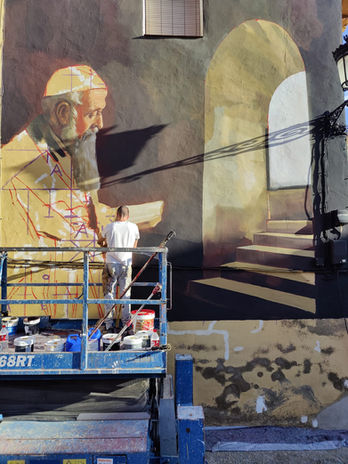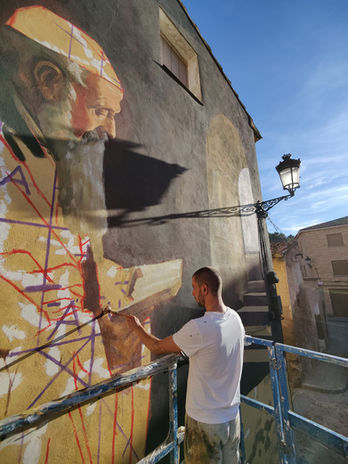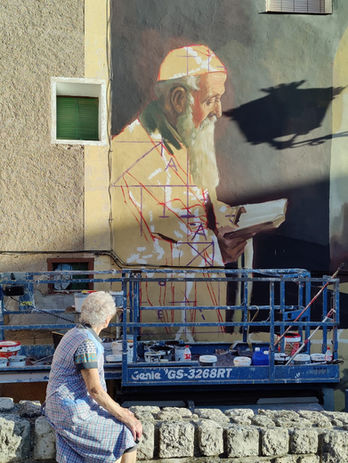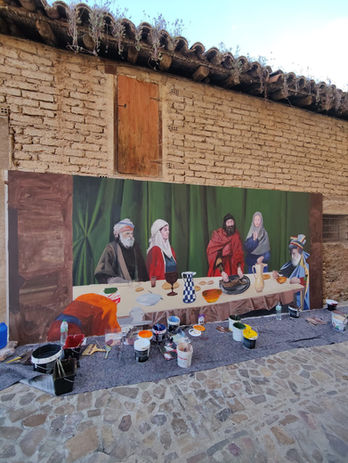
HISTORY CANVAS
Welcome to Canvases of History
A project that aims to highlight our historical past through medieval manners scenes captured on its walls and streets.
Join us on this visit and be part of our murals in the Jewish quarter of Daroce. Take a look and through them we will reveal the customs and traditions of our Jewish aljama.
Since its foundation, Daroca housed an important Jewish community, settled in the current Barrio Nuevo
The first Jewish emigrants took up residence in the city very shortly after its Muslim founding. A stable community already exists, with a political and institutional structure, when Ramón Berenguer IV granted jurisdiction in 1142, after the conquest of the population. This letter provides for equal treatment of the different religious confessions, without requiring the Jews to move their location, as is the case with the Mudejars.
In 1230 the city reached its demographic peak, with about 4,000 inhabitants, not including the Muslim and Jewish minorities. The latter, in the last third of the 13th century, was made up of 25 families, which contributed almost a tenth of the ordinary taxes that the king collected in the aljamas of Aragon. Among the most common surnames are Abenhaliça, Abenrodrich, Abenjuçaf, Abensanç, Aboleix, Abulafia, Abutarda, Albó, Alguandul, Almulí, Avayut, Benavida, Benvenist, Bonet, Çahot, Calo, Carralbo, Cohen, Constantín, Durant, Farhi, Huerto, Fedanch, Mocan and Pasariel, among others.
After the Tortosa dispute, the pressure became almost unsustainable for the Jewish community, forced to convert. According to tradition, the presence of Micer Vicente Ferrer in 1414 led to the baptism of more than a hundred Jews after a sermon delivered in the Turret. Three out of five Jews adopt baptism and the rest will choose to emigrate to nearby villages.
A significant part of these converts comes from the ruling strata of the aljama, which will be integrated into the council oligarchy throughout the Modern Age. These lineages include the Santángel, Reina, Rodrigo, Santa Pau, Orduño, Romans, Espulgas, Pallarés, Durán, Diego, Naharro, Liñán, Marcilla, Cabrerizo, Soler, Monforte and Lerma.
The peculiar structure of the Village Community made it possible for some fifteen families to continue practicing their rites, going unnoticed, no more than fifty kilometers from Daroca, which will allow the children of the expelled to return. After the expulsion decree, proclaimed in the Collegiate Church of Santa María on Sunday, April 29, 1492, the Jewish quarter was renamed Barrio Nuevo, a name that it still retains.
Let's discover together the traditions and customs that show our four Canvases of History of the Jewish Quarter.
Click on each photo to see the information of the mural.

















